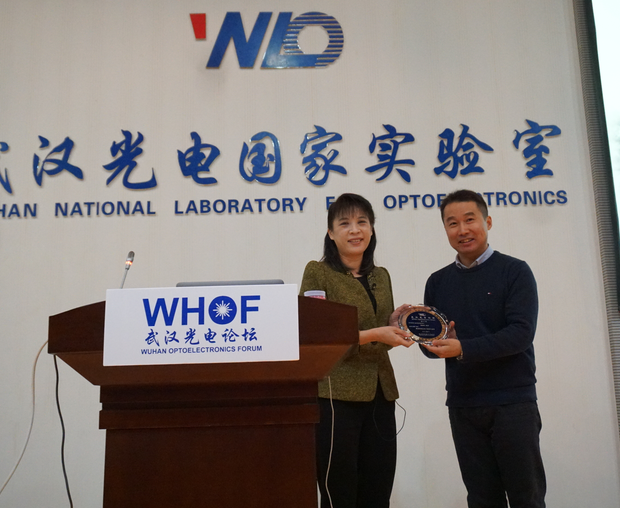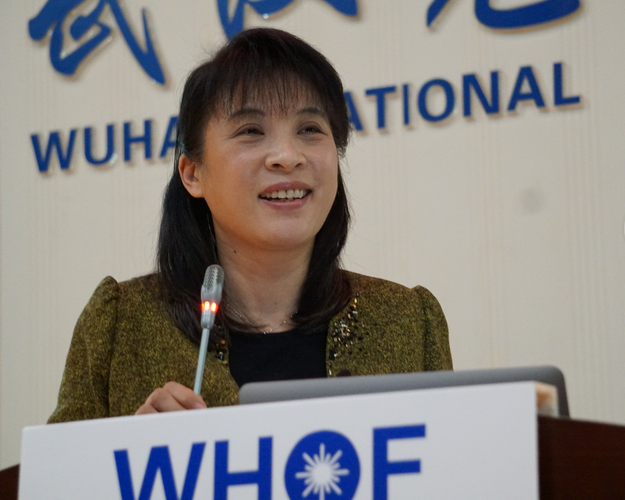WUHAN, China (January 9, 2017) - Wuhan Optoelectronics Forum No. 117 was successfully held in Auditorium A101 at Wuhan National Laboratory for Optoelectronics (WNLO) in the morning of January 9.
In analogy to the energy-bands of electrons,the energy-momentum relations of other fundamental particles (such as photons), quasi-particles (such as phonons), and polaritonscan be considered as “general energy-bands”. This report indicates that by manipulating so called “general energy-bands” of fundamental particles or quasi-particles, such as photon, phonon, and surface plasmon polariton (SPP), novel optoelectronic characteristics can be obtained, which results in a series of new functional devices. A silicon based optical switch with an extremely broadband of 24 nm and an ultra-compact (8 mm×17 mm) footprint was demonstrated with a photonic crystal slow light waveguide. By proposing a nanobeam based hetero optomechanical crystal, a high phonon frequency of 5.66 GHz was realized experimentally. Also, we observed and verified a novel effect of two-surface-plasmon-absorption (TSPA), and realized diffraction-limit-overcoming photolithography with resolution of ~1/11 of the exposure wavelength. Beyond those, a threshold-less Cherenkovradiation was demonstrated with hyperbolic metamaterial.
Yidong Huang received the B.S. and Ph.D. degrees in optoelectronics from Tsinghua University, Beijing, China, in 1988 and 1994, respectively. From 1991 to 1993, she was with Arai Laboratories, Tokyo Institute of Technology, Japan, on leave from the Tsinghua University. In 1994, she joined the Photonic and Wireless Devices Research Laboratories, NEC Corporation. She came back to the Department of Electronic Engineering, Tsinghua University in 2003, as a professor, and be appointed by the Changjiang Project and the National Talents Engineering in 2005 and 2007, respectively. She has been the Chairman of the Department from 2013. She is presently engaged in the research on nano-structure optoelectronics. Professor Huang authored/co-authored more than 300 journal and conference papers. She is a senior member of the IEEE.

